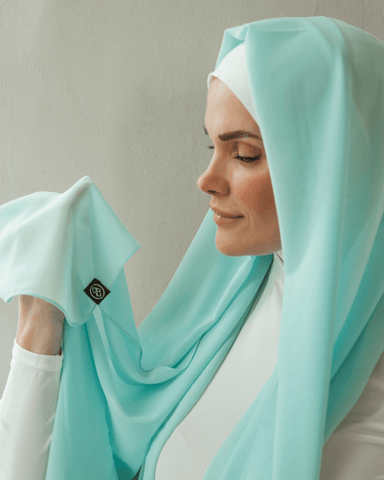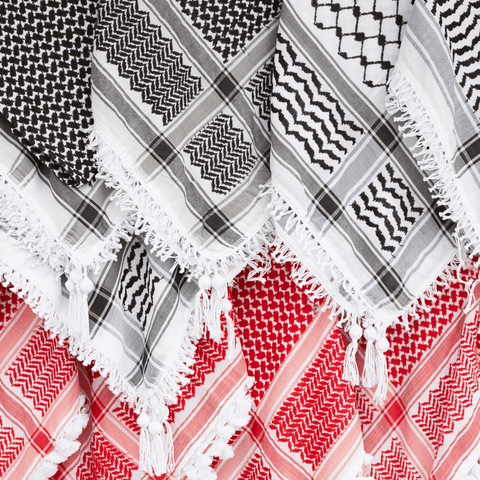Veiled Varieties: Exploring the Different Types of Hijab
Muslim women around the world use a variety of veils for head covering, each with its own unique name and characteristics. While many may generalize Hijab to refer any headscarf the reality is that there are several distinct types of coverings.
Today, we will explore the different types of veils that Muslim women use for head covering.
Hijab
This is the most known and used headscarves among the Muslim women. It typically covers the hair and neck while leaving the face clear. The hijab can be made from various fabrics and comes in different styles, reflecting personal, cultural, and religious preferences.

Types of Hijabs:
Amira Hijab: This two-piece veil slips on effortlessly, pin-free for ease and convenience.

Chiffon Hijab: Its sheer, lightweight fabric makes it a perfect complement to formal attire.

Cotton Hijab: Known for its breathability, it’s the go-to for comfortable daily wear.
Slinky Hijab: This hijab clings and contours with a stretchy elegance, ideal for a polished look.
Woven Hijab: Rich textures and elaborate designs set this hijab apart, offering a touch of tradition.
Jersey Hijab: Versatile and cozy, its soft stretch accommodates any style with comfort.
Hijab Bodysuit
The hijab bodysuit is an innovative garment that merges the hijab with a bodysuit, crafted from a blend of ITY Polyester and Spandex for superior comfort. This unique design ensures a cohesive and elegant appearance, eliminating the hassle of matching separate pieces. It’s meticulously shaped to fit the contours of your neck, face, and head, providing a secure and comfortable experience throughout the day.

Shayla
A shayla is a rectangular or square-shaped scarf popular in the Gulf region. It is wrapped around the head and secured at the shoulders, often with pins. This type of veil is known for its simplicity and elegance, allowing for versatility in styling while providing modest coverage

Tudung
The tudung is a type of hijab popular in Southeast Asia, particularly in countries like Malaysia and Indonesia. It’s a type of hijab that covers not only the head and hair but also the neck and chest, ensuring modesty and privacy. The tudung is similar to other forms of hijab found in Middle Eastern cultures but is distinct in its style and cultural significance in the Malay-speaking world

Khimar
It's a long, cape-like veil that covers the hair, neck, and shoulders, and sometimes extends to the waist or even longer. It is a popular choice among Egyptian women. Khimars are often crafted from lightweight, breathable materials that ensure comfort while providing coverage. There are various styles of Khimars, including some with a cap-like top, which is convenient for those who wear glasses or lead an active lifestyle. The Khimar is distinct from other types of hijabs due to its shape and the level of coverage it offers, making it a unique expression of cultural identity and religious practice.

Niqab
The Niqab is a veil that envelops the face, leaving only the eyes visible. It is worn by some Muslim women as a part of sartorial hijab practice. The Niqab serves both as an expression of cultural identity and a commitment to modesty.

Keffiyeh
The Palestinian Keffiyeh, commonly known as the shemagh, ghutrah, or hatta, is more than just a familiar accessory in the Middle East and North Africa. The iconic black-and-white chequered design of the Keffiyeh stands as a powerful emblem of Palestinian heritage, often considered a symbolic representation of the nation’s flag. It's a type of hijab that is embraced by both men and women. It is renowned for its versatility and is typically crafted from cotton, featuring a variety of patterns and hues.

Turbans
Turbans are versatile headwraps that are not exclusive to any single culture. They can be styled in numerous ways and are adopted by many for their simplicity, elegance, and the dignified presence they command.












